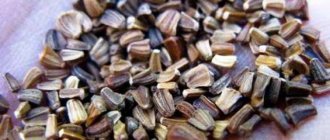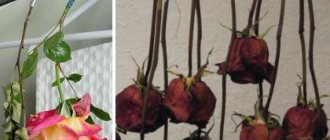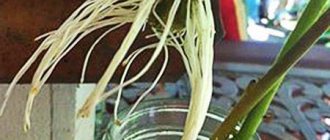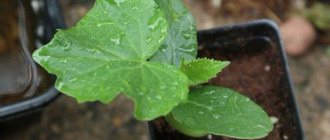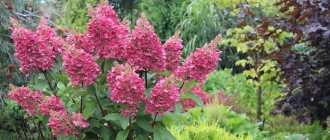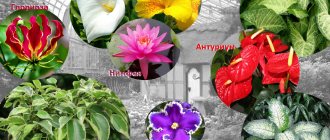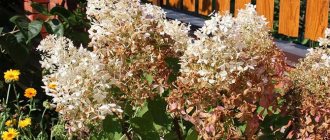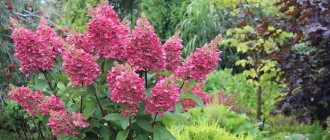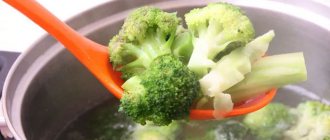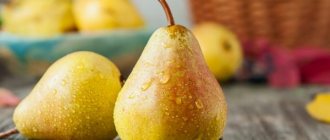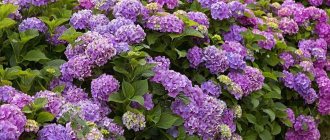Plants » Flowers
0
230
Article rating
Kira Stoletova
Garden flower crops are characterized by long flowering. At the same time, florists have long adapted to preserving the beauty of its buds dry for the winter, creating different compositions for decorating home and office interiors. There are several ways to dry hydrangea yourself.
How to dry hydrangea
The right time to cut
Most varieties of garden hydrangea, especially paniculata, are characterized by a color change during sexual ripening, closer to the end of the flowering stage: in warm regions it turns from light to pink, and in cold regions it acquires a purple hue.
As the inflorescences mature, they lose density: the soft petals dry out, their structure begins to resemble paper.
If you intend to dry flower buds, you should not allow the flowers to dry completely directly on the bush, because Over time they will soften and turn brown. However, there is no need to rush into tearing it down. If you cut the buds at the active flowering stage, a large amount of moisture will remain in the stems, and the period of complete drying will take longer, which will affect the decorativeness of the dead wood.
The most suitable time for cutting is peak ripening (usually in September - early October), when all the petals of the upper sepals open. But this must be done at the first appearance of a rich contrasting shade.
Selection and preparation of flowers: how to properly dry hydrangea
Hydrangea first came to the gardens of Western Europe around the first half of the fourteenth century from East and Southeast Asia, China or Japan. There it is distinguished by a colossal diversity of species; it can also grow in South and North America, in the Far East.
Most subspecies of hydrangeas are bushes, but there are trees and vines. They can be height (length) from 1-2.5 meters to 28-35. Those cultivated in the gardens of our country are often deciduous, due to the climatic characteristics of the temperate regions, but there are also evergreens.
How and when to collect inflorescences
The most difficult thing is to correctly guess the time when it is time to cut the flowers to send for drying. If you rush, there will be too much moisture in the stems so that the flowers dry out quickly. If you wait too long to cut, you can end up with yellowish-brown inflorescences.
Do you have an electric dryer?
Not really
The suitable period begins in May and lasts until late autumn, approximately until mid-October. You can judge by the fact that some flowers begin to noticeably brown, but the main head remains the original shade. Parts that have become unusable can always be cut off with scissors or a sharp knife, then they will not spoil the appearance of dried flowers.
The flower is cut with a stem of arbitrary length, making an oblique cut, and placed in a basket or on a clean cloth. You cannot leave hydrangea untreated even for a short period of time. After only 1-1.5 hours it may lose its attractive appearance and become unsuitable for drying. It is optimal to cut the inflorescences in the evening of a warm, sunny day, making sure that there was no precipitation the day before.
Preparation for the process
The flowers are sorted out, laid out in one layer on paper or fabric. All dry or damaged areas are cut off. Leaves from the stems also need to be completely removed; they will not allow the hydrangea to dry out properly. It is optimal to leave the stems 30-45 centimeters long for ease of further use.
Some people leave the flowers to dry without cutting them. However, you need to understand that no matter what shade they were initially, after such natural drying, the petals will take on the color of old paper - yellowish-beige, with brownish or yellowish inclusions.
Basic methods
There are several methods for drying hydrangea at home.
Dried hydrangea
- Head down. The bud is hung by the shoots and in this state is allowed to dry completely. Usually this method is used to dry a bouquet when the short stems do not allow the cuttings to be placed in a container.
- In ordinary water. Cut flowers are cleared of foliage, placed in water at the level of the middle of the shoots and placed in a cool room. Keep the hydrangea without adding liquid, waiting to dry as the moisture dries.
- In glycerin. The cuttings are placed in an aqueous solution of glycerin (2:1), which will saturate the stems and petals. As the water evaporates, only glycerol will remain in the plant cells. As a result of glycerin impregnation, the shoots will gain elasticity and shine. It is recommended to dry no more than 5 copies in one container.
- In silica gel. The stems are cut 2.5 cm from the base. A layer of silica gel is poured into a plastic container, completely covering the bottom. The buds are placed with their heads down, avoiding their contact. Add the gel until the inflorescences are completely immersed in it. Cover the container with a lid and place it in a dark place for 4-5 days.
- Flat drying. Each inflorescence is separated from the stem and placed in a book, having previously been placed on both sides with a cotton pad divided into two parts. Complete drying time takes about 10-14 days. Instead of a book, they use a press made of two sheets of plywood, between which are layers of cardboard and parchment paper.
- Volumetric drying. Pour table salt or semolina into a container, place the buds in them, giving them the required shape, and add filler.
However, drying methods have a number of advantages and disadvantages. Drying in air in a suspended state is simple and does not require any expense, but the dead wood is brittle and does not have long-term storage.
If dried in water or glycerin, the buds do not lose color and retain their decorative appearance for a long time. But these drying methods will take longer.
Which decorative dried flowers to choose?
We are used to buying a bouquet, admiring its beauty for a week or two, and reluctantly throwing out the already crumbling plants.
But with hydrangea, a different scheme is possible. It turns out that it can be painted or preserved by drying it. How to do this - read our article. Gardeners like to experiment with the Ph of the soil to color the shrubs with spherical inflorescences growing in the garden. They add aluminum solutions and oxidizing agents to it, and the hydrangea changes color from blue to blue or pink. But if you really want to, you can also paint the cuttings, having previously determined the acid-base balance of the water. Indicator strips for its determination are sold in pharmacies.
https://www.youtube.com/watch?v=ytcopyrighten-GB
If you want the blue petals of the inflorescences to acquire a delicate pink or bright red hue, add citric acid to the water. The more drops, the redder the tone.
The most accessible way to increase the alkaline level of a liquid is to dilute baking soda in it at the rate of 600 mg per 240 ml. The petals will now turn blue. The more alkaline it is, the richer the color will be.
Such manipulations do not affect white color. But you can try changing the color of your hydrangea using food coloring. It is enough to dilute them in water. But don't forget that this is a bush. Therefore, its stem is dense, and is colored in this way for a long time and not intensely.
Date: Tuesday January 16th, 2018
We can dry entire caps of beautiful inflorescences, or we can dry each individual flower, like a herbarium. The inflorescences make beautiful winter bouquets. They are beautiful both in their natural form and brightly colored. From dried flowers you can create a delicate composition on paper or make a romantic floral confetti.
When choosing flowers for a spring flower bed, pay attention to “immortal” plants that, after cutting and finishing flowering, retain an attractive shape. Such compositions of dried flowers are an excellent decor for the autumn garden and home.
Many dried flower plants are easy to care for, undemanding to where they grow and go well with each other. This explains the popularity of such special flowers. And bouquets of dried flowers fit harmoniously into the interior of any style.
There are many plants that are suitable for making bouquets of dried flowers. We will tell you only about the most popular and spectacular representatives.
Gypsophila paniculata Flamingo
This decorative spherical bush (up to 80 cm high) with small flowers (about 1 cm in diameter) creates an excellent background for other accent flowers. The varieties with white and pink inflorescences are especially popular: Snezhinka, White Holiday, Pink Star, Flamingo, etc.
Kermek (Limonium)
These paniculate inflorescences with miniature flowers are also suitable for creating a background in a flower bed and edging bouquets. The color of decorative flowers can be yellow, pink, lilac, violet. Such a wide selection of shades allows you to create a flower garden and bouquet for every taste.
This is not only a healing plant, but also an excellent dried flower for home decor. Decorative yarrows come in all sorts of colors. Depending on the type and variety, they are used as a background or accent plant.
Celosia
Particularly popular are silvery comb celosia (popularly called cockscomb), silvery pinnate and spicata. Their unusual, brightly colored inflorescences (red, purple, orange, yellow) last until the first frost and look great as cut flowers.
https://www.youtube.com/watch?v=ytabouten-GB
These lush paniculate and spherical inflorescences leave no one indifferent. Of course, during flowering, hydrangea looks more impressive than in late autumn. But brown dry inflorescences can also add charm to your flower garden and winter bouquets.
Most often, annual Helipterum species are grown in gardens, since these plants are especially attractive as dried flowers. They have inflorescences-baskets, consisting of small flowers, wrapped in petal-shaped scales of silver, white, yellow or pink color. They give these sunny flowers a special charm.
We invite you to familiarize yourself with Winter fishing for pike on a balancer
Currently, spherical gomphrena is especially popular, in particular its dwarf varieties (up to 15 cm in height). These compact annual plants have small flowers with bracts of pink, white, beige, and purple colors. The spherical flowers resemble clover in appearance. They do not fade from July until the first frost.
These blue flowers with their charming spiky leaves make a great accent to a flower bed and add a unique look to winter bouquets. Tall varieties look good in group and solitary plantings, while low-growing varieties look good in ridges, rock gardens and mixborders.
Physalis
Physalis is a favorite plant of florists. With its help you can easily add bright colors to any bouquet. Unusual orange “lanterns” need to be cut before the fruits are fully ripened, then the dried flowers will retain their attractive appearance for a longer time.
In the fall, after flowering has ended, attractive “cones” remain on the strong stems of Echinacea - the cores of the flowers, in which the seeds are located. They perfectly decorate the garden in winter.
This plant has a variety of species. Large spherical flowers are great for creating fresh and dry bouquets. Roses, delphiniums, irises, lupins, garden geraniums, peonies, hostas, aquilegias, etc. look organic in the flowerbed next to the decorative bows.
All cereals are decorative almost all year round, but in winter bouquets they are good only as a background and addition to the main flowers. Particularly popular are shakers, lagurus, miscanthus, bromegrass, and pampas grass.
You can make attractive bouquets of dried flowers with your own hands. But for this you need to cut the plants in time.
Some plants are cut at the budding stage, others - at the moment of full bloom, and others - after the formation of fruits. The exact cutting time depends on what kind of flower and in what form you want to dry. So, at different periods of time, cereals acquire different shades. This allows you to obtain dried flowers of various colors.
https://www.youtube.com/watch?v=ytpressen-GB
However, only undamaged plants should be cut. Do this during the day or late afternoon in dry and clear weather. The stems and leaves should not be wet during collection.
Try to cut the flower with the longest stem possible and dry it that way. This way the plant will be better preserved, and then you can “adjust” the length of the stem to the height of the bouquet.
Flowers for winter bouquets are dried in the same way as medicinal herbs. Find a dry, shaded and well-ventilated place for them. For example, a spacious attic. Bright sunlight should not penetrate there so that the flowers and fruits do not fade and retain the brightest color possible. This is especially true for physalis “lanterns”.
It is best to hang flowers by the stem with the inflorescences facing down. Then the plants will not lose their shape. At the same time, it is important to arrange them not too crowded, so that each specimen is well ventilated. Dried flowers should be stored in the same conditions until their turn comes to become part of the winter bouquet.
Dried flowers go well together, so you don't have to be a professional florist to make an attractive bouquet. Combine home-dried flowers as you wish. Both monochrome and multi-color floral arrangements look good. Experiment and you will be able to create great home decor!
Painting dry buds
Special substances help color dried flowers in the desired shade, incl. acrylic paints and professional Rit dyes for decorating dried flowers.
How to dry hydrangea for the winter
Technology:
- Boil water in a large saucepan;
- the dye is dissolved in the proportions according to the instructions for use, leaving no crumbs or undissolved clots;
- To obtain light shades, dry buds are immersed in boiling water for a short period of time; if you want to paint them a deeper color, the amount of treatment is increased.
If the dried bouquet still has dark areas that appeared during growth on the bush or due to improper drying, the petals can be pre-bleached in laundry bleach, and only then begin painting. This will allow you to cover the hydrangea evenly.
You can also paint dried flowers with aerosols. It is advisable to carry out the procedure outdoors, starting from the inside and smoothly moving to the top and stem. The drying time from the moment of painting is about half an hour, after which a second coat of paint is applied. To add shine, the painted flower is coated with car varnish on top.
Storage Types
Well-dried flowers can be immediately placed in dry vases or collected into beautiful decor for different rooms. They stand well and will delight you with their unusual, attractive appearance for a very long time. If you are not going to immediately collect ikebana, and your goal was to dry hydrangea for a winter bouquet, then it is better to store it in a plastic bag. Other containers can be used:
- Glass or ceramic jars.
- Plastic containers with tight lids.
- Cardboard or wooden boxes, bast boxes.
It is advisable that the humidity in the room should be no more than 55%, at a temperature of 16-22°C. The optimal shelf life of dried hydrangea is 24-30 months. In the right conditions, flowers can maintain their good appearance for a much longer time.
What problems might you encounter?
Most often, when drying flowers at home, you are faced with the appearance of dark spots on the petals. This is due to the late cutting of the workpiece material. However, even with a successful result, sometimes it is not possible to preserve dead wood for a long time.
How to dry a hydrangea flower for decoration
To extend the shelf life of winter dried flowers:
- Do not keep a dry colored bouquet in direct sunlight;
- it is necessary to maintain humidity in the room without drying out the air;
- remove accumulated dust using an air stream from a syringe so as not to damage the integrity of the petals.
Drying hydrangea for a winter bouquet: preserving all the brightness and splendor
Hydrangea perfectly retains the brightness of its buds when dried.
Thanks to this, flowers can be sent in beautiful arrangements. Moreover, they can stand for several years without losing their aesthetics. “Preserving” flowers is not difficult, the main thing is to remember a few little tricks:
— The most important thing is to observe the cutting time. Most hydrangeas can change color as they mature and with the weather. It is important not to let the flowers dry out directly on the bush - otherwise it will no longer be possible to preserve it: the flowers will become brown and soft. Therefore, it is better to wait until the inflorescences are fully ripe. You can cut it when all the buds open and a contrasting shade appears.
— It is better to dry the twigs separately. They do this in one of three ways: 1. Hang the branches upside down and let them dry in this state. 2. Place the flowers in a jar of water and place them in a cool place. But you shouldn’t add more water - it will evaporate and the buds will dry out over time. 3. Take a container of water, add glycerin to it at a ratio of 2:1. The stems will be saturated with the solution and it will be distributed throughout the inflorescence. The water will evaporate and only glycerin will remain in the flowers.
— As a rule, the most beautiful flowers are obtained if you use the last two methods. Air-dried hydrangea will not last long and will be brittle. And glycerin and water will preserve the color of the beautiful inflorescences for at least a couple of years.
Like, if the information was useful, subscribe to the Sadoriya.ru channel.
Source
Usage
Everything is clear with the drying process, and if you still have questions, you can watch the video on how to dry hydrangea for a winter bouquet, located at the end of the article. All that remains is to figure out how to use dry inflorescences. They can be used to make compositions, bouquets, and also be used as independent decor in residential and office spaces.
Home craftswomen make a variety of handmade crafts from dried flowers. Manicurists use petals to decorate their nails, but that’s not all. Air-dried hydrangea tea is useful for colds, vitamin deficiency and low immunity; it is aromatic and tasty.
Source
